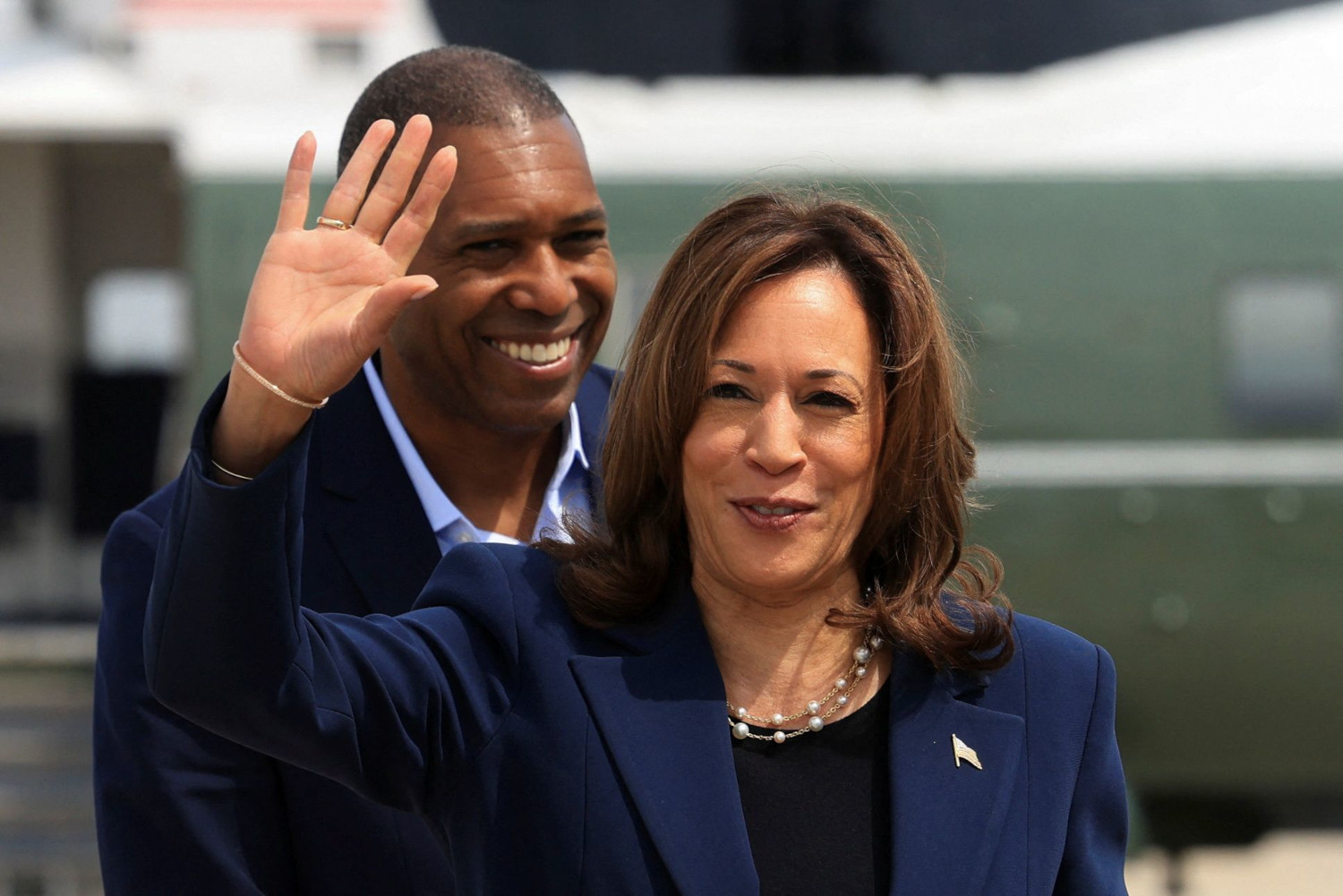- President-elect Donald Trump proposed a 60% tariff on goods from China and 10% to 20% on other imports.
- Trade experts said the proposals would probably increase costs in areas such as apparel and technology.
- It’s still unclear how Trump would enact the tariffs, and he could end up going smaller than proposed.
President-elect Donald Trump has big plans for tariffs. If implemented, Americans could see prices rise across several product categories.
Some companies that produce apparel and auto parts have already started preparing to raise prices if Trump enacts his plans, and some trade experts predicted that a range of industries, including electronics and appliances, would see higher prices.
Mary Lovely, a senior fellow at the nonpartisan Peterson Institute for International Economics, told Business Insider that Trump could implement his proposed tariff on Chinese goods quickly — within the first half of 2025 — using an authority in the Trade Act. But she added that it was possible the president-elect wouldn’t follow through on the 60% tariff he proposed on the campaign trail. He also proposed a 10% to 20% tariff on goods imported from other countries.
“Nothing is taxed at 60% right now, so every sector is vulnerable to seeing higher tariffs,” Lovely said, adding that she’d expect a lower tariff, such as 20% or 25%. There’s also the question of how much of the tariff burden would fall on consumers, Lovely said, and a lot of it depends on the mechanisms Trump uses to implement the tariffs.
Trump has said his tariff proposals wouldn’t impact consumer prices and would instead serve as a tax on other countries and boost American manufacturing. The impacts of his previous tariffs were mixed. In 2018, for example, tariffs on washing machines caused prices to rise on laundry items. The smaller 30% to 50% tariffs on imports from China that Trump implemented in his first term were not found to be inflationary, and President Joe Biden kept most of them in place.
“Consumers are going to be at a burden, but it may take some time for them to feel it, like a slow drip,” Lovely said.
Still, Jonathan Gold, the vice president of supply chain and customs policy at the National Retail Federation, said it was reasonable for both companies and consumers to prepare for higher prices. He told BI that companies were already concerned.
“Whether it’s a finished good or an input to production, anything that gets brought into the country from somewhere else is going to get hit with that tax,” Gold said.
When asked about tariffs’ impacts on inflation, Trump’s spokesperson Karoline Leavitt said, “In his first term, President Trump instituted tariffs against China that created jobs, spurred investment, and resulted in no inflation.
Based on analyses from economists and trade experts, here are the goods that could become more expensive for Americans under Trump’s tariff proposals.
Apparel and shoes
The National Retail Federation estimated that with Trump’s proposals in place, prices for apparel would increase by 12.5%, prices for footwear would increase by 18.1%, and travel goods — which include backpacks and wallets — would increase by 13%.
A Bank of America research note said retailers that sourced more than 20% of their goods from China, including Crocs and American Eagle, were at higher risk from Trump’s tariff proposals. Crocs told BI in a statement that it had “strong partnerships” around the world and was “well versed in managing through various headwinds that impact our supply chain.”
As is standard, we will continue to monitor changing regulations and legislation as we move into the new administration and we remain nimble in our ability to respond to the same,” Crocs said, adding that it would continue to look for product sourcing outside China.
American Eagle didn’t immediately respond to a request for comment from BI.
Some retailers have already announced preparations to increase prices should Trump’s tariff plans go into effect. Columbia Sportswear CEO Tim Boyle said during an October earnings call that he was “very concerned about the imposition of tariffs.” He later told The Washington Post the company was “set to raise prices” in response to Trump’s plans.
Electronics
An October report from the Consumer Technology Association estimated that the proposed tariffs would increase laptop and tablet costs by 45%, smartphone costs by 25.8%, video-game consoles by 39%, and televisions by 9%.
China is a major supplier of electronic products, so everyday products that Americans use — such as smartphones and laptops — would probably see price increases. The CTA report said that in 2023, China accounted for 87% of US video-game-console imports, 78% of smartphone imports, and 79% of laptop and tablet imports.
While some companies could try to shift their production out of China, Gold said it’s not an easy process.
“You can’t change a supply chain overnight,” Gold said. It takes months, if not years, to be able to find a new vendor that you’re comfortable with that can meet all of your different requirements, has the capacity, the skilled workforce, the infrastructure works within the country.
Cars
Major car companies import auto parts from China, Mexico, and Europe, and some executives have already warned that the industry would most likely face higher prices under Trump’s tariffs. Philip Daniele, the CEO of the auto-parts company AutoZone, said during a September earnings call that if Trump carried out his tariff plans, “we will pass those tariff costs back to the consumer.
“We generally raise prices ahead of that,” Daniele said, adding that prices would settle over time. “So, that’s historically what we’ve done.”
Shinji Aoyama, Honda’s executive vice president, said on a November earnings call that Trump’s proposals would have a “big impact” not just on Honda but on other car companies such as General Motors and Ford. Still, he said he thought it would take some time for the tariffs to be imposed, and at that point, Honda might consider moving production to a country that’s not subjected to US tariffs.
Lovely said a lot of auto-parts production was coming from China, so it was “very reasonable” to prepare for price increases. But shifting production would present difficulties because if Trump implements his 10% to 20% universal tariff, “you don’t really know if there’s any safe place,” she said.
Furniture
The National Retail Federation report estimated that a 10% universal tariff and a 60% tariff on imports from China would increase furniture costs by 6.4%. Specifically, the report said a $200 crib could end up costing $213 after tariffs, and a $2,000 mattress and box spring could rise to $2,128.
The NRF added in its report that the higher costs would hit low-income households the hardest: “They spend twice as much of their after-tax income on furniture as high-income households,” it said.
Additionally, Henrik Elm, the chief financial officer for Inter Ikea — the group that connects Ikea stores with suppliers — told Reuters the company was preparing for higher tariffs under Trump, and Ikea had worked to make its supply chain more responsive to changes.
“I think we are better equipped than we have been ever before,” Elm said, adding, “Of course we are not immune to changes.”
Appliances
NPR reported in 2019 that Americans were seeing higher prices on appliances such as washing machines after Trump implemented a 20% tariff on the product. The National Retail Federation report said it expected appliance pieces to rise again under Trump’s higher tariff proposals with a 19.4% price increase on items including stoves, fridges, dishwashers, and blenders.
The analysis found that the price of a basic fridge would rise from about $650 to $776.
Gold said it was unlikely Trump’s tariffs would go into effect on day one or day two, and “it’s tough to say right now at what point consumers would feel the impact.
“It could also depend upon the individual companies and what their tariff mitigation plans are and how much they can try and lessen the impact on the consumers,” Gold said. “Obviously, larger companies might have little more ability to do that than small, medium-sized folks who really can’t absorb the impact of the tariff and would immediately have to pass on those costs.”
Groceries
Trump vowed to lower grocery prices for Americans — during a town hall in September, he said he’d lower grocery prices by restricting food imports to promote production in the US. His tariff plans could, however, increase grocery prices.
The centrist think tank Third Way analyzed eight common purchases that the US either heavily imports or is unable to produce domestically. Using data from the International Trade Commission, the report estimated that with Trump’s tariff proposals in place, coffee costs would rise by $0.23, frozen-beef prices would rise by $1.09, and olive-oil prices would rise by $0.31.
Taylor Rogers, the Republican National Committee spokesperson, previously told BI that “Trump will once again cut taxes and unleash American energy to lower prices on groceries and other goods when we send him back to the White House.









